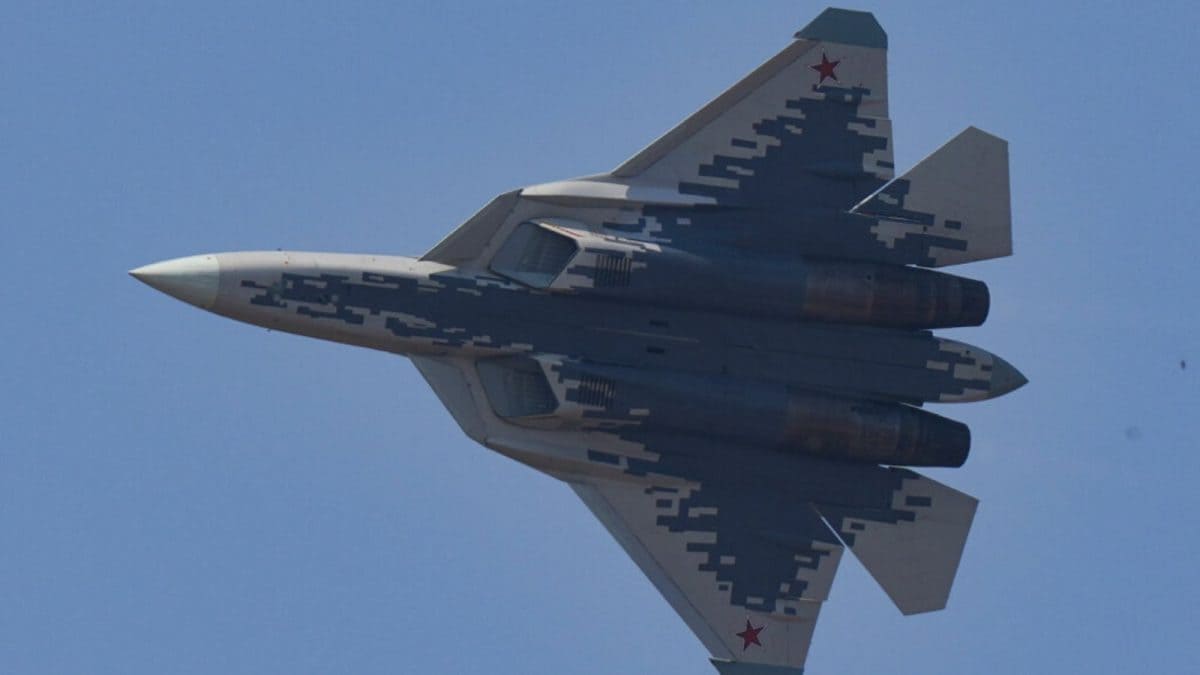 |
|
The unveiling of Russia's first AI-powered Sukhoi Su-57M fighter jet represents a significant shift in the landscape of aerial warfare, potentially offering India a strategic advantage given its long-standing defense ties with Russia and its substantial fleet of Russian-origin aircraft. The successful testing of the Su-57M, with its integrated artificial intelligence system handling critical flight control, navigation, and target selection functions, marks a crucial step towards autonomous combat aviation. This development not only positions Russia to compete more effectively with advanced American fighters like the F-22 Raptor and F-35 Lightning II but also presents India with a potential pathway to enhance its own air combat capabilities. The Su-57M's AI integration is a key component of Russia's PAK FA program, initiated in 1999 to develop fifth-generation air superiority fighters. Equipped with the powerful AL-51F-1 engine, state-of-the-art stealth features, and long-range radar systems, the Su-57M represents a formidable advancement in aviation technology. While the initial flight was not fully autonomous, with a human pilot still present in the cockpit for safety reasons, the AI system managed key operational aspects, demonstrating the potential for faster decision-making and reduced pilot workload, especially in high-risk combat scenarios. The implications of this technology extend beyond individual aircraft performance. Defence analysts suggest that AI-enabled fighters could operate in networked swarms, respond to threats in real time, and adapt to complex mission demands with minimal human intervention. This could revolutionize air warfare strategy, enabling more effective and efficient operations. India's strong defense ties with Russia, particularly its operation of over 270 Su-30MKI aircraft, make it a natural partner in exploring AI-enhanced aviation technologies. The Su-30MKI program, which began with a 1996 deal and involves licensed assembly and manufacturing by Hindustan Aeronautics Limited (HAL), has provided India with a potent and versatile combat platform. The twin-seater, twin-engine fighter is renowned for its long range, supermaneuverability, and modern avionics. Given India's reliance on the Sukhoi platform, the integration of AI could provide a cost-effective means of upgrading its existing fleet and enhancing its combat capabilities. As geopolitical alignments shift and future air battles become increasingly automated, India's interest in Russia's AI-assisted fighter program is likely to intensify. The potential benefits of AI integration include improved situational awareness, faster reaction times, enhanced target acquisition, and reduced pilot workload. These advantages could significantly improve the effectiveness of Indian air operations and provide a crucial edge in future conflicts.
The Indian Air Force (IAF)'s operational experience with the Su-30MKI provides a valuable foundation for integrating AI technologies. The IAF's familiarity with the Sukhoi platform, combined with its established maintenance and support infrastructure, would facilitate the adoption of AI-enhanced systems. Furthermore, India's growing expertise in artificial intelligence and machine learning could be leveraged to customize and optimize AI algorithms for specific operational requirements. The integration of AI into the Su-30MKI fleet could also create opportunities for collaboration between Indian and Russian defense industries, fostering innovation and technology transfer. By working together, the two countries could develop advanced AI solutions tailored to the needs of the IAF. The strategic implications of AI-enhanced aviation technologies are far-reaching. In an increasingly complex and contested airspace environment, AI can provide a decisive advantage by enabling faster and more accurate decision-making. AI-powered systems can analyze vast amounts of data from multiple sensors, identify potential threats, and recommend optimal courses of action in real time. This can significantly reduce the cognitive burden on pilots and allow them to focus on critical tasks. Furthermore, AI can enable autonomous or semi-autonomous operations, reducing the risk to human pilots and extending the operational reach of air forces. For example, AI-powered drones could be used for reconnaissance, surveillance, and electronic warfare missions in high-threat environments. The development of AI-powered fighter jets also raises important ethical and legal considerations. It is crucial to ensure that AI systems are designed and deployed responsibly, with appropriate safeguards to prevent unintended consequences. Human oversight and control must be maintained to ensure that AI systems are used in accordance with international law and ethical principles. As AI technology continues to advance, it is essential to address these ethical and legal challenges proactively.
The successful integration of AI into fighter jets requires a multi-faceted approach, encompassing hardware upgrades, software development, data integration, and pilot training. The Su-57M's AL-51F-1 engine, state-of-the-art stealth features, and long-range radar systems provide a solid foundation for AI integration. However, further upgrades may be necessary to accommodate the additional computing power and sensor requirements of AI systems. The development of robust and reliable AI software is also critical. AI algorithms must be able to accurately analyze data from multiple sources, identify patterns, and make sound decisions in complex and dynamic environments. This requires extensive testing and validation to ensure that AI systems perform as expected in real-world scenarios. Data integration is another key challenge. AI systems rely on vast amounts of data to learn and improve. This data must be collected, processed, and integrated from various sources, including sensors, databases, and intelligence feeds. Ensuring data quality and security is essential to prevent errors and protect sensitive information. Pilot training is also crucial. Pilots must be trained to work effectively with AI systems and understand their capabilities and limitations. This requires developing new training programs and simulations that incorporate AI-enhanced technologies. The integration of AI into fighter jets is not without its challenges. One of the main challenges is ensuring the reliability and robustness of AI systems. AI systems must be able to operate reliably in harsh environments and withstand cyberattacks. Another challenge is managing the complexity of AI systems. AI systems can be incredibly complex, making it difficult to understand how they work and to predict their behavior. Addressing these challenges requires a collaborative effort between government, industry, and academia. By working together, we can ensure that AI is used responsibly and effectively to enhance our national security.
Source: Russia Unveils First AI-Powered Sukhoi Su-57M Fighter Jet. Here's How India Benefits
